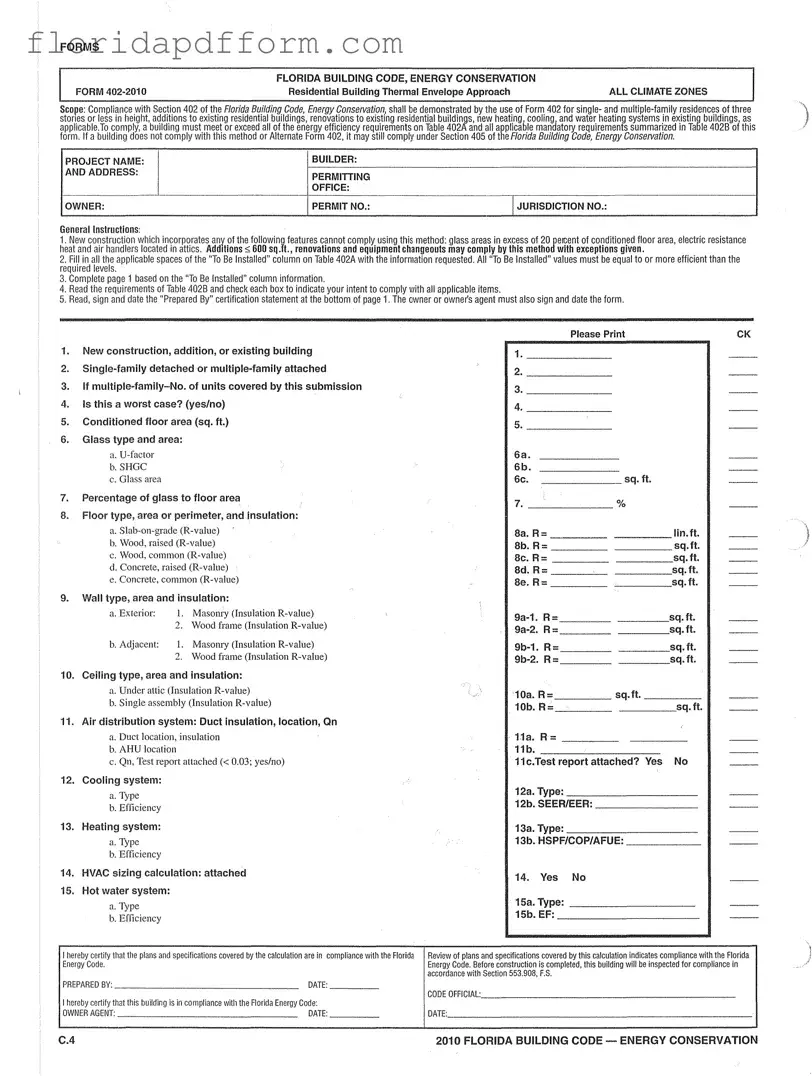How to Use Florida Energy
Completing the Florida Energy form is an essential step in ensuring your construction project meets the energy efficiency requirements outlined in the Florida Building Code. This form helps you document compliance with specific energy conservation measures. Below are the steps you need to follow to accurately fill out the form.
- Identify the type of project: Select whether it is new construction, an addition, or an existing building.
- Specify the type of residence: Indicate if it is a single-family detached or multiple-family attached building.
- If applicable, state the number of units covered by this submission for multiple-family projects.
- Answer whether this is a worst-case scenario (yes or no).
- Provide the conditioned floor area in square feet.
- Detail the glass type and area: Fill in the U-factor and solar heat gain coefficient (SHGC) for each glass type.
- Calculate the percentage of glass to floor area.
- Describe the floor type, area, or perimeter, and insulation values, including R-values for each type.
- Provide information on wall types, areas, and insulation values.
- Detail the ceiling type, area, and insulation values.
- Document the air distribution system, including duct insulation and location, as well as any test reports.
- Specify the cooling system type and its efficiency.
- Specify the heating system type and its efficiency.
- Attach any HVAC sizing calculations and hot water system specifications as required.
- Complete the "Prepared By" certification statement at the bottom of page 1.
- Ensure that the owner or owner's agent signs and dates the form.
After completing these steps, review the form for accuracy. This careful attention to detail will help ensure that your project aligns with the necessary energy conservation standards, paving the way for a successful inspection and compliance with the Florida Energy Code.
